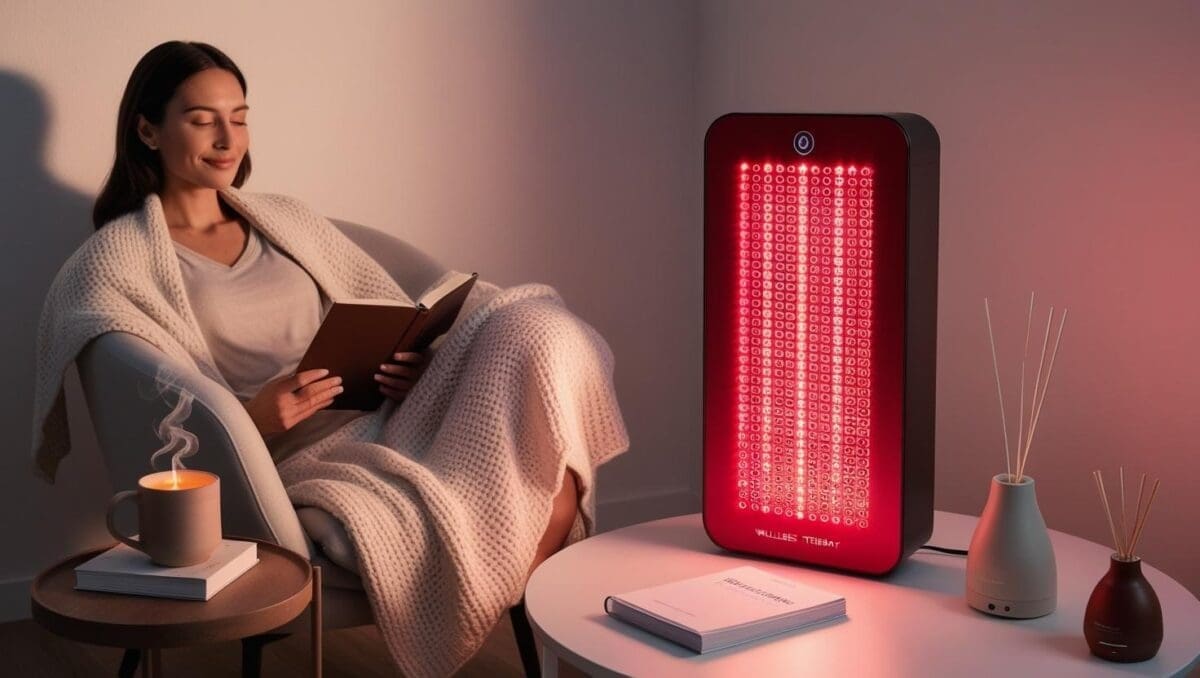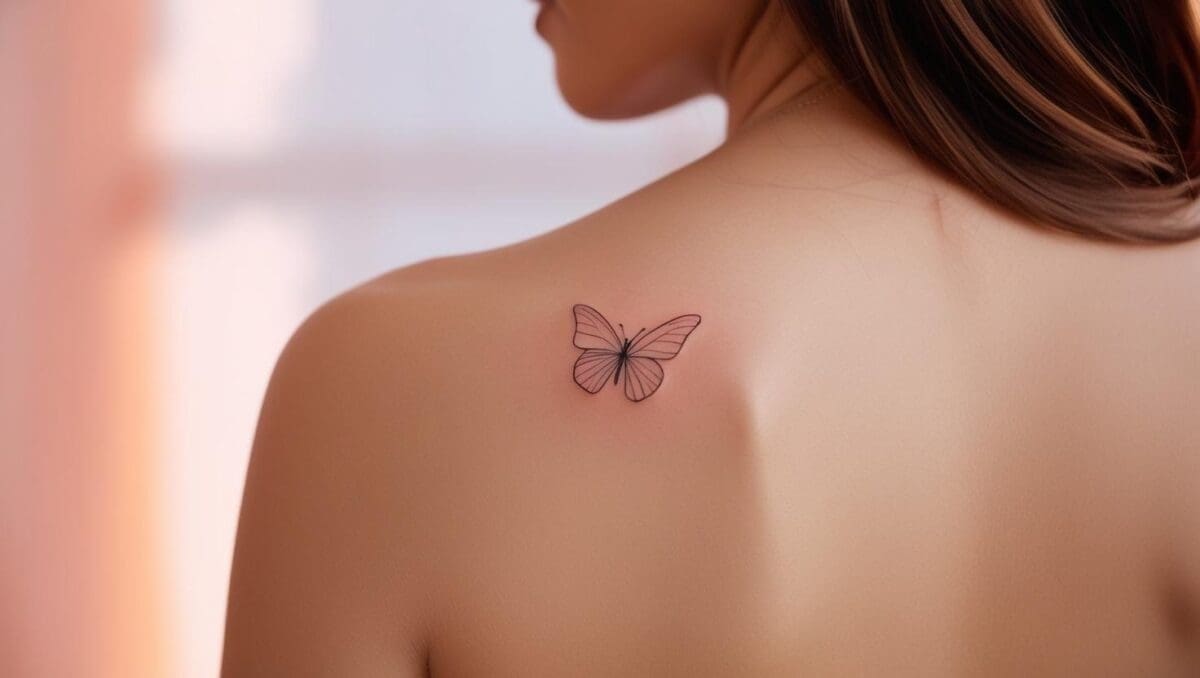Creating a Wedding Environment That Feels Just Right
Planning a wedding is an exciting experience, but for someone with ADHD, it can also be overwhelming. Traditional wedding decor often involves bright lights, loud music, excessive decorations, and chaotic layouts, which can create sensory overload rather than joy.
But here’s the good news—your wedding doesn’t have to follow the traditional mold. You can design a space that is stimulating in all the right ways, without being overstimulating. By incorporating intentional decor choices, calming elements, and sensory-friendly touches, your big day can feel as beautiful, fun, and manageable as you imagined.
This list of 30+ ADHD-friendly wedding decor ideas will help you create a celebration that enhances focus, minimizes distractions, and supports sensory needs—so you can be fully present for your special day.
1-5: Sensory-Friendly Decor & Sound Tolerance Features 🎶🎧
Why It’s Important for ADHD:
For individuals with ADHD, loud environments can be overstimulating and exhausting. Sensory-friendly decor choices help reduce distractions and create an environment where guests feel comfortable rather than overwhelmed.
How to Create It:
1️⃣ Loop Earplugs & Sound-Dampening Accessories: Many people with ADHD struggle with sensory processing, making loud sounds overwhelming. Providing stylish Loop Earplugs or noise-dampening accessories allows guests to enjoy the atmosphere without feeling overstimulated. 2️⃣ Soft & Natural Textures: Hard, reflective surfaces amplify noise, making spaces feel chaotic. Using fabric-draped walls, plush seating, and area rugs absorbs sound and creates a cozier, more grounding space. 3️⃣ Noise-Control Zones: A designated “Quiet Corner” with noise-canceling headphones, soft lighting, and comfortable chairs gives people a space to retreat when the environment feels overstimulating. 4️⃣ Balanced Sound Levels: Directional speakers focus the music where needed while keeping background noise levels manageable, preventing overwhelm for guests sensitive to excessive noise. 5️⃣ Nature-Inspired Decor: Water features, potted plants, and wooden textures create a natural sensory balance, helping guests feel more at ease.

6-10: ADHD-Friendly Wedding Layout & Flow 🏡✨
Why It’s Important for ADHD:
People with ADHD often struggle with disorganization, chaotic spaces, and unclear directions. Having a structured yet visually clear layout helps guests navigate the space without feeling lost or overwhelmed.
How to Create It:
6️⃣ Minimalist Layout: A cluttered environment can make it difficult to focus. Keeping decorations and seating arrangements simple and open reduces visual distractions and improves comfort. 7️⃣ Clearly Defined Areas: Signage that labels reception spaces, dining areas, and quiet zones reduces confusion and helps guests understand where to go. 8️⃣ Multiple Seating Options: ADHD brains often need movement and flexibility. Providing different seating styles (social round tables and private lounge areas) allows guests to choose what feels most comfortable. 9️⃣ Easy Transitions Between Events: People with ADHD can struggle with unexpected transitions. Color-coded decor cues or subtle lighting changes help guests subconsciously prepare for event shifts. 🔟 Interactive Signage: Using visual timers or countdown clocks helps guests anticipate changes and keeps them engaged.
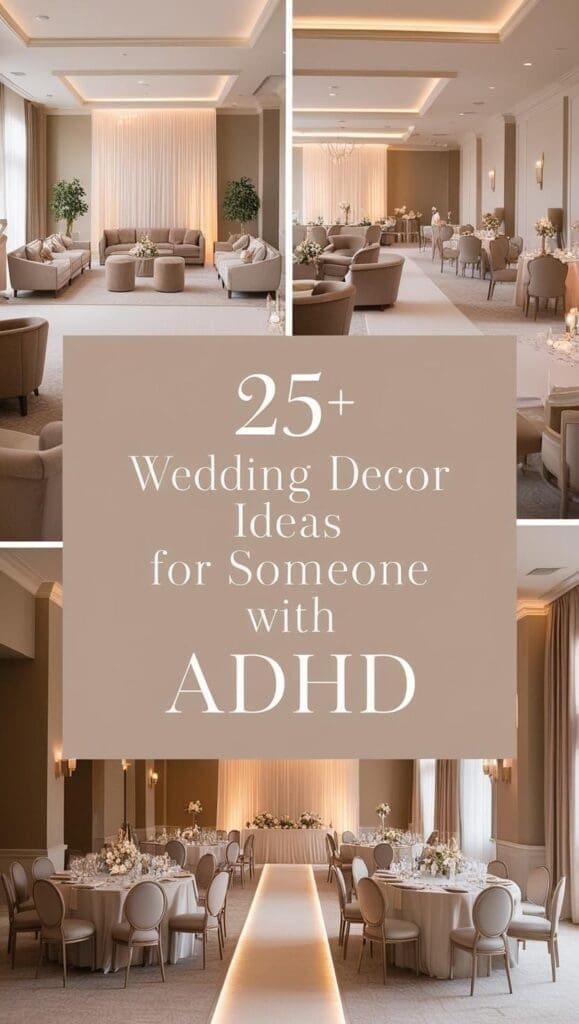
11-15: Lighting That Soothes, Not Overwhelms 💡🌙
Why It’s Important for ADHD:
Bright or flickering lights can be overstimulating and make it difficult to focus. Soft, warm lighting helps create a calm, welcoming atmosphere that supports attention and relaxation.
How to Create It:
1️⃣1️⃣ Warm, Soft Lighting: Avoid harsh overhead lighting and use string lights, chandeliers, or candles to create a warm ambiance that promotes emotional regulation. 1️⃣2️⃣ Avoid Strobe or Flickering Effects: Flickering lights can cause sensory discomfort and eye strain for ADHD individuals. Use steady, soft lighting to maintain a comfortable environment. 1️⃣3️⃣ Use Color Psychology: Colors influence mood and attention. Blues and greens promote calmness, while amber and peach tones create warmth and social comfort. 1️⃣4️⃣ Table Lighting Options: Offer adjustable lamps or small tea lights to allow guests to control their own lighting preferences at their table. 1️⃣5️⃣ LED Pathway Lights: Pathway lights help define movement areas and provide a sense of direction, making it easier for ADHD guests to navigate the space smoothly.
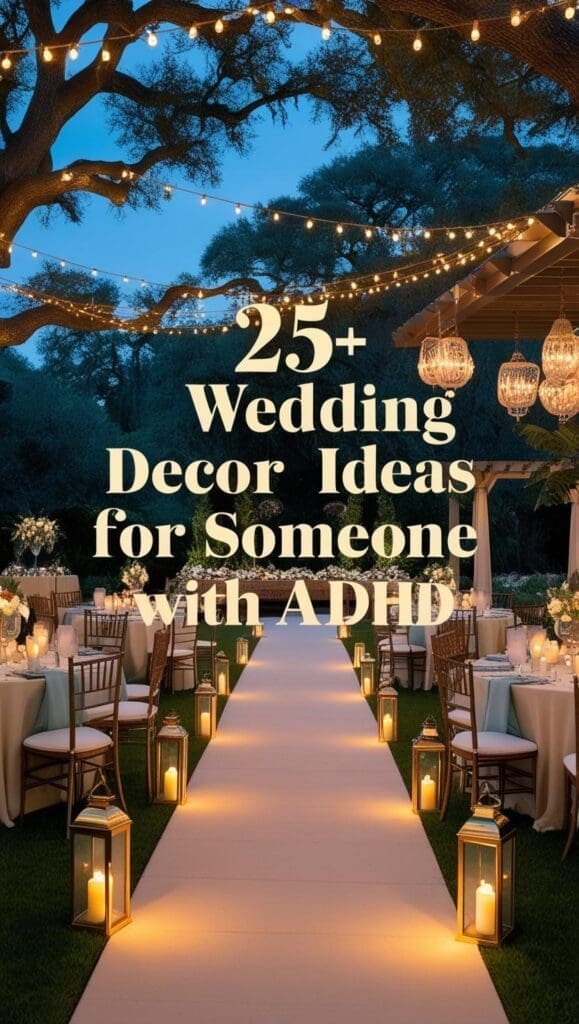
16-20: Stimulating, Yet Calming Decor Choices 🎨💐
Why It’s Important for ADHD:
ADHD brains crave stimulation, but too much visual clutter can be overwhelming. A balance of engaging yet minimal decor creates a welcoming and structured environment.
How to Create It:
1️⃣6️⃣ Keep Color Schemes Simple: A two or three-color palette prevents visual overload and creates a more organized look. 1️⃣7️⃣ Avoid Too Many Visual Distractions: Overly elaborate centerpieces or decorations can be overwhelming—choose clean, structured elements instead. 1️⃣8️⃣ Nature-Inspired Textures: Wood, stone, and natural fabrics provide a grounding effect, which can help with focus and emotional balance. 1️⃣9️⃣ Personalized, Interactive Decor: Guest participation elements like a wish tree, message wall, or memory book provide an engaging but non-overwhelming form of interaction. 2️⃣0️⃣ Keep Centerpieces Low: Tall, dramatic centerpieces can feel distracting—using lower-profile arrangements helps keep the space open and calming.
21-25: Interactive & Engaging Elements 🎭🧩
Why It’s Important for ADHD:
ADHD guests might struggle with long periods of inactivity or traditional sit-down events. Interactive decor helps keep them engaged without overwhelming them.
How to Create It:
2️⃣1️⃣ Fidget-Friendly Wedding Favors: Providing small sensory-friendly gifts like worry stones or soft keychains offers discreet focus tools. 2️⃣2️⃣ Creative Guestbook Ideas: A video booth, message board, or polaroid station makes participation more engaging than traditional paper guestbooks. 2️⃣3️⃣ Tabletop Puzzles or Doodle Pads: Interactive elements at tables help guests stay occupied and engaged. 2️⃣4️⃣ Movement Opportunities: Lawn games or a dance break area provide positive movement outlets for ADHD guests who need activity. 2️⃣5️⃣ Soft Seating Options: Beanbags, hammocks, or soft cushions allow guests to choose comfortable seating that suits their needs.
By understanding how ADHD affects sensory perception, focus, and engagement, you can create a wedding space that allows everyone to fully enjoy the celebration without discomfort or overwhelm. With thoughtful design choices, your wedding can be a beautiful, inclusive, and ADHD-friendly event that reflects your personality and ensures a joyful experience for all! 💍✨
Would you like a wedding checklist or printable guide to help plan your ADHD-friendly wedding? Let me know! 😊or printable ADHD-friendly seating guides? Let me know! 😊 seating guides? Let me know! 😊
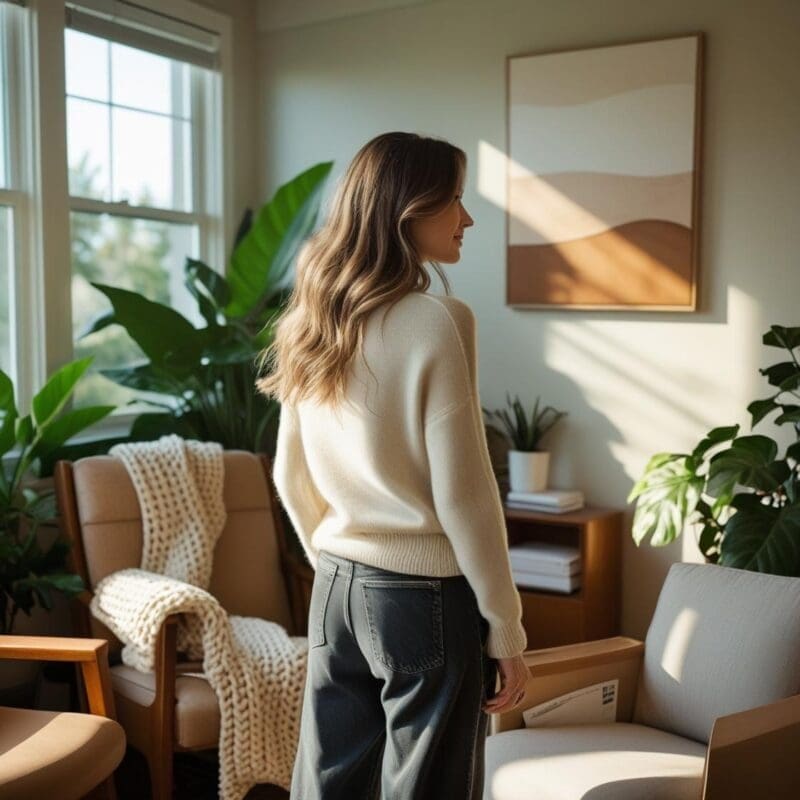
About the Author
Hi, I’m Eve, a former school counselor with a master’s degree in School Psychology and a passionate advocate for children and families navigating sensory challenges. As a mom of children with sensory sensitivities, I deeply understand the journey special-needs parents face, and I dedicate myself to researching and sharing practical solutions to help children thrive and feel comfortable in their bodies. My goal is also to empower counselors, therapists, and psychologists with creative strategies and supportive resources to enrich their everyday practice. When I’m not writing or exploring new therapeutic approaches, you’ll find me spending quality time with my family and continually seeking inspiration from everyday moments.

